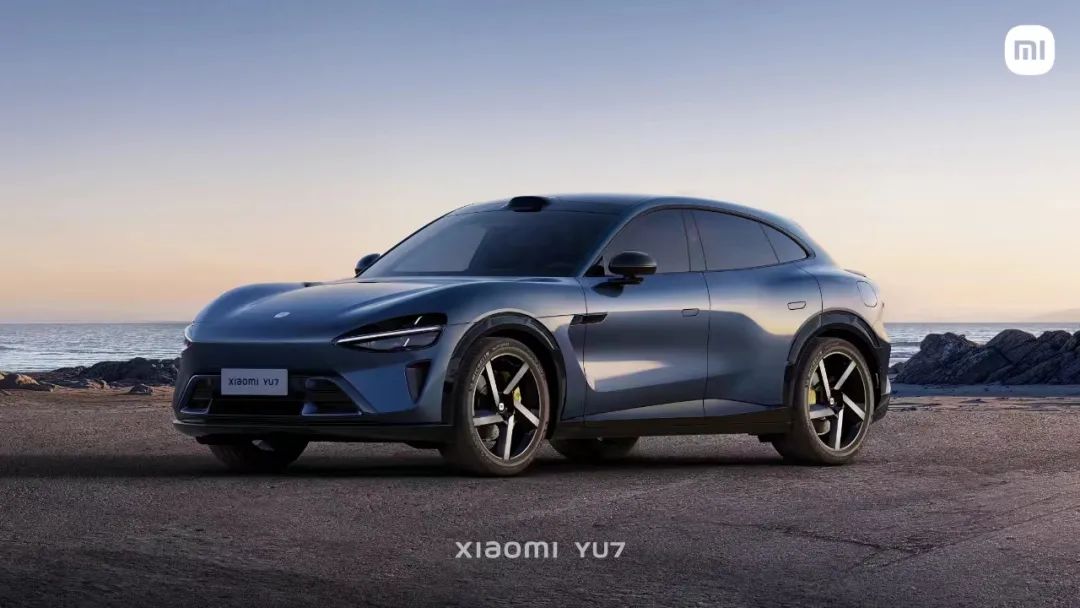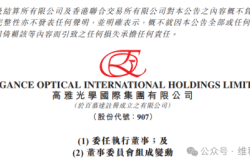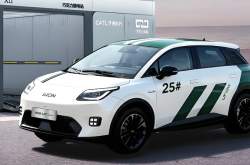Is the First 'Ferrari' for Young People Here?
![]() 12/31 2024
12/31 2024
![]() 618
618
Xiaomi is poised to disrupt the SUV market with its upcoming offering.
Xiaomi's maiden SUV model, Xiaomi YU7, is on the horizon.
Recently, a set of unmasked real-life photos of Xiaomi's SUV model YU7 surfaced online, reportedly captured at Yanqi Lake in Beijing. Prior to this, Xiaomi Car had already unveiled official images of Xiaomi YU7 on social media, marking Xiaomi's debut into the SUV segment. According to Xiaomi Car's roadmap, the new vehicle is scheduled for launch in July 2025, with an anticipated starting price of around RMB 300,000, positioning it to compete with mainstream models like the Tesla Model Y.

Image Source: Xiaomi Car
Xiaomi YU7 bears a striking resemblance to Xiaomi SU7, showcasing evident familial traits. However, some netizens have humorously noted that Xiaomi SU7 mimics the Porsche Taycan, while Xiaomi YU7 resembles the Ferrari Purosangue, jesting that the first Ferrari for the younger generation has finally arrived.
Lei Jun, Chairman and CEO of Xiaomi Group, tweeted on Weibo that Xiaomi is currently conducting extensive road tests and by making these tests public early, they aim to swiftly remove the heavy camouflage from YU7 test vehicles. This will facilitate more comprehensive and detailed long-term large-scale testing to ensure product quality and deliver superior products.
Goldman Sachs is optimistic about the demand prospects for this new model and believes Xiaomi YU7 has the potential to become one of the top-selling high-end new energy SUVs in China, targeting the Tesla Model Y and Li Auto L6.
Currently, Tesla Model Y, which has been in the Chinese market for four years, consistently leads in SUV sales and remains an elusive benchmark for many new models. However, according to overseas media reports, the new Tesla Model Y is likely to be the first to debut in the Chinese market in early 2025. In other words, Xiaomi YU7 will have to compete with a refreshed Tesla Model Y.
Can Xiaomi YU7 challenge Tesla Model Y's dominance?
Model Y: Always the Benchmark, Yet Unrivaled
Data indicates that Tesla Model Y sold 44,576 units in November and 418,428 units from January to November, consistently topping SUV sales charts.
Numerous automakers have introduced pure electric SUV models aimed at competing with Tesla Model Y. These include the L60, the inaugural model from NIO's second brand Aion, Zeekr's all-new SUV Zeekr 7X, Harmony OS's first pure electric coupe SUV, the all-new SUV AITO 07, Luoshan Zhiyin, and SAIC Group's all-new upgraded IM Motors LS6. The offensive mounted by these six models against Tesla has been dubbed in the automotive industry as "six sects besieging Guangmingding."
'Tesla is an unavoidable topic for all new energy vehicle companies,' said Lu Fang, CEO of AITO Auto, to China News Weekly. Tesla Model Y now serves as the market benchmark and will naturally be tracked, studied, and attempted to be surpassed by newcomers.
Lu Fang elaborated, 'Compared to Tesla Model Y, AITO Zhiyin entered the market later and can adopt newer technologies in charging, smart cabins, and smart driving, potentially surpassing it in product capabilities. However, from a branding perspective, our brand is newer and has yet to firmly establish a brand advantage among user groups like Tesla has.'
While these newly launched models offer various advantages over Tesla Model Y in terms of range, smart driving, and other aspects, none have been able to unseat Tesla Model Y's market position in terms of sales.
The upcoming Xiaomi YU7 will also go head-to-head with Tesla Model Y.
According to information from the Ministry of Industry and Information Technology's application catalog, Xiaomi YU7 is classified as a mid-to-large SUV, powered by pure electricity, offering a maximum power of 220kW and 288kW and a top speed of 253km/h. The vehicle measures 4.999 meters in length, 1.996 meters in width, and 1.6 meters in height, with a wheelbase of 3 meters.
Goldman Sachs analyzed, 'If the official version of the YU7 car aligns with the regulatory documents to date, i.e., if long-range support and large battery capacity are standard configurations, then we believe there is potential for the average selling price (ASP) of YU7 to increase.' Goldman Sachs anticipates the launch of more Xiaomi models to boost gross margins and has given Xiaomi a 'buy' rating.
Due to the enthusiastic market reception of its first model, higher expectations are placed on Xiaomi. As early as the end of March this year, when Xiaomi SU7 was launched, Lei Jun expressed his admiration for Tesla and stated that Xiaomi SU7 outperformed Tesla Model 3. Recently, Lei Jun announced on social media, 'Xiaomi SU7 deliveries have surpassed 100,000 units, achieving the annual target ahead of schedule! We will strive for a new goal: 130,000 annual deliveries!' Xiaomi Group's third-quarter financial report on the automotive business revealed that innovative businesses such as smart electric vehicles generated revenue of RMB 9.7 billion, a 45.7% increase from the previous quarter, with the automotive business's gross margin climbing to 17.1%.
This has further heightened consumer anticipation for Xiaomi YU7.
Is there still an opportunity for pure electric models in the evolving SUV market?
Currently, sales of fuel-powered vehicle models are declining, whereas sales of new energy vehicle models are on the rise.
According to data from the China Passenger Car Association, in November, national passenger vehicle retail sales reached 2.423 million units, marking a year-on-year increase of 16.5% and a month-on-month increase of 7.1%. This growth was primarily fueled by the rapid surge in new energy vehicle sales. Specifically, domestic retail sales of new energy passenger vehicles amounted to 1.268 million units, representing a year-on-year increase of 50.5%. Conventional fuel vehicle retail sales stood at 1.155 million units, registering a year-on-year decrease of 7%.
From January to November, conventional fuel vehicle retail sales totaled 10.663 million units, a year-on-year decrease of 15%. New energy passenger vehicle retail sales reached 9.594 million units, a year-on-year increase of 41.2%. In other words, new energy passenger vehicle retail sales are on the brink of matching those of conventional fuel vehicles.
From a specific segment perspective, the SUV market as a whole is trending upwards, with a notable increase in recognition for new energy SUV models.
From January to November, cumulative retail sales in the domestic SUV market approached 10 million units, reaching 9.965 million units, with a year-on-year increase of 8.8%. Looking at specific models, Tesla Model Y, BYD Song PLUS New Energy, and BYD Yuan PLUS ranked among the top three SUV sales for the first 11 months of this year, all being new energy models. A few years ago, the SUV market was dominated by fuel models like the Haval H6.
Simultaneously, with the rise of the new energy vehicle market, independent brands have achieved widespread sales growth. According to data from the China Passenger Car Association, in November, retail sales of independent brands totaled 1.54 million units, marking a year-on-year increase of 34% and a month-on-month increase of 4%. The domestic retail share of independent brands for the month was 64.1%, a year-on-year increase of 8.7 percentage points; the cumulative share of independent brands in 2024 was 60%, an increase of 8.5 percentage points compared to the same period last year. Among them, traditional automaker brands such as BYD, Geely Auto, Chery Automobile, and SAIC-GM-Wuling Automobile have witnessed significant increases in their market share.
However, despite the increasing market share of new energy vehicles, with pure electric vehicles still accounting for the highest proportion, it is undeniable that the growth rate of pure electric vehicles has slowed. According to statistics from the China Passenger Car Association, from January to November 2024, among new energy vehicles, pure electric models sold a cumulative total of 5.552 million units. Although this represented the largest share, the growth rate decelerated, with a year-on-year increase of 22%; plug-in hybrid and extended-range models achieved retail sales of 2.996 million and 1.045 million units, respectively, with growth rates exceeding 76% and 90%.
Since 2021, the growth rate of pure electric models has been outpaced by plug-in hybrid and extended-range models. In recent years, despite the continuous emergence of new pure electric models, few have truly transformed the market landscape. The models that have maintained long-term popularity and led the development of segment markets have largely remained the same.
In summary, while the SUV market appears to be undergoing significant transformations, there are also signs of consolidation. Among the myriad models competing with Tesla Model Y, will Xiaomi YU7 emerge victorious?





